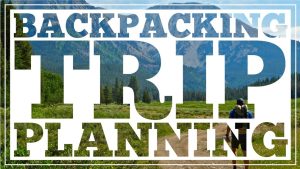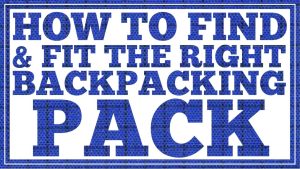Ep. 17 – 5 Essential Backpacking Knots
We independently test everything we recommend.
Buying through links on our site supports our work.
5 Essential Backpacking Knots – Ep. 17
Knowing how to tie the right knot for the situation is a lot like having the right tool in your toolbox for a job. You could hammer a nail in with a screwdriver, but it won’t be nearly as effective and things can quickly go very wrong.
In this episode, we’ll focus on the most important and commonly used knots that will be useful for your trips in the backcountry.
It should be said though that there are an abundance of useful knots out there. So if this is the type of information you’re into, I highly encourage doing some research and learning more useful knots for the trail.
For now, start out by learning some of the most basics knots that any backpacker should know, and grow your skills from there.
Bowline knot:
The bowline knot is among the most common and useful knots out there.
It makes a secure loop on the end of a rope that will not slip or bind and can easily be removed when there is no load on it.
To tie a bowline knot:
- First, lay the rope across your left hand with the free end hanging down. Form a small loop in the line in your hand.
- Bring the free end up to and pass through the eye from the under side
- Wrap the line around the standing line and back down through the loop
- Tighten the knot by pulling on free end while holding standing line
One way to easily remember this knot is that the rabbit comes out of the hole, goes around the tree, and back down the hole.
The shortcut for this knot is to place one end of the rope over the other and then to form the loop in one motion. Pass the end of the rope around and through and it’s locked tight.
Taut-line hitch:
The taut-line hitch is another very common knot that is primarily used when setting up shelters in the backcountry.
A taut-line will slide freely, but will hold under a load, making adjustments to the line very easy.
To tie a taut-line hitch:
- Pass the rope around a tree or other object several feet from the free end.
- Coil the free end twice around the standing line working back toward the tree.
- Then, make one additional coil around the line, but this time on the outside of the coils you just made.
- Finally, tighten the knot and slide it on the line to adjust the tension.
Some modern ropes are made of very slippery materials, so a taut-line might not hold well with those ropes, but most of the time, it will be a great knot to use.
Square knot:
Tying a square knot is just about as basic as backpacking knots come and you should know how to tie one, even if just for the general knowledge of a clean looking tie.
The square knot, or reef knot, is intended to be a binding knot, but it should not be trusted for critical items or to tie two ropes together.
To tie a square knot:
- Tie two over hand knots. First, right over left and under. Then left over right and under. Or vice versa.
- Pull on all four ropes evenly to lock the knot and make sure both parts of the rope exit the knot together. If they don’t, you probably tied a granny knot.
Sheet bend
The sheet bend knot is a good knot for joining two ropes together, even if they are of unequal size.
Unlike the square knot, the sheet bend will not slip under tension and is much less likely to jam, so it will untie easier.
To tie a sheet bend:
- First, form a loop with the thicker rope and hold it in one hand.
- Then pass the thinner rope through the loop and behind both ends that form the loop.
- Finally, tuck the smaller rope under itself and pull all four ends of the rope to cinch it tight.
If you wrap the smaller rope around both parts of the first rope twice you will make a doubled sheet bend, which can be useful if the ropes are of very different sizes.
Truckers Hitch:
A trucker’s hitch is a great knot for cinching down a load. Because of it’s mechanical advantage, it is a useful knot to use for securing a very taught tie down.
There are several popular variations of the truckers hitch because it is such a valuable knot, so do some research if you’re interested in other methods.
To tie a truckers hitch:
- Start with one end of the rope fixed to an object, like car roof rack. About mid way on the rope tie a slippery half hitch to form a loop in the line.
Wrap the rope around another fixed point and feed the free end back through the loop you created.
- Using the loop like a pulley, cinch down the free end as tight as you need to and secure the knot with two half hitches around one or both lines.
Now you have a taught tie down that will hold tight and release easily.
Wrap Up
Those five knots will give you a great start to solving the some of the most common uses for rope ties in the backcountry.
If you find that you enjoy these knots and you’re interested in learning more, I highly recommend doing a little research to build your skills.
I’m Dave Collins with cleverhiker.com. Hike light, hike smart, and have fun.
MORE EPISODES IN THIS SERIES
View all





